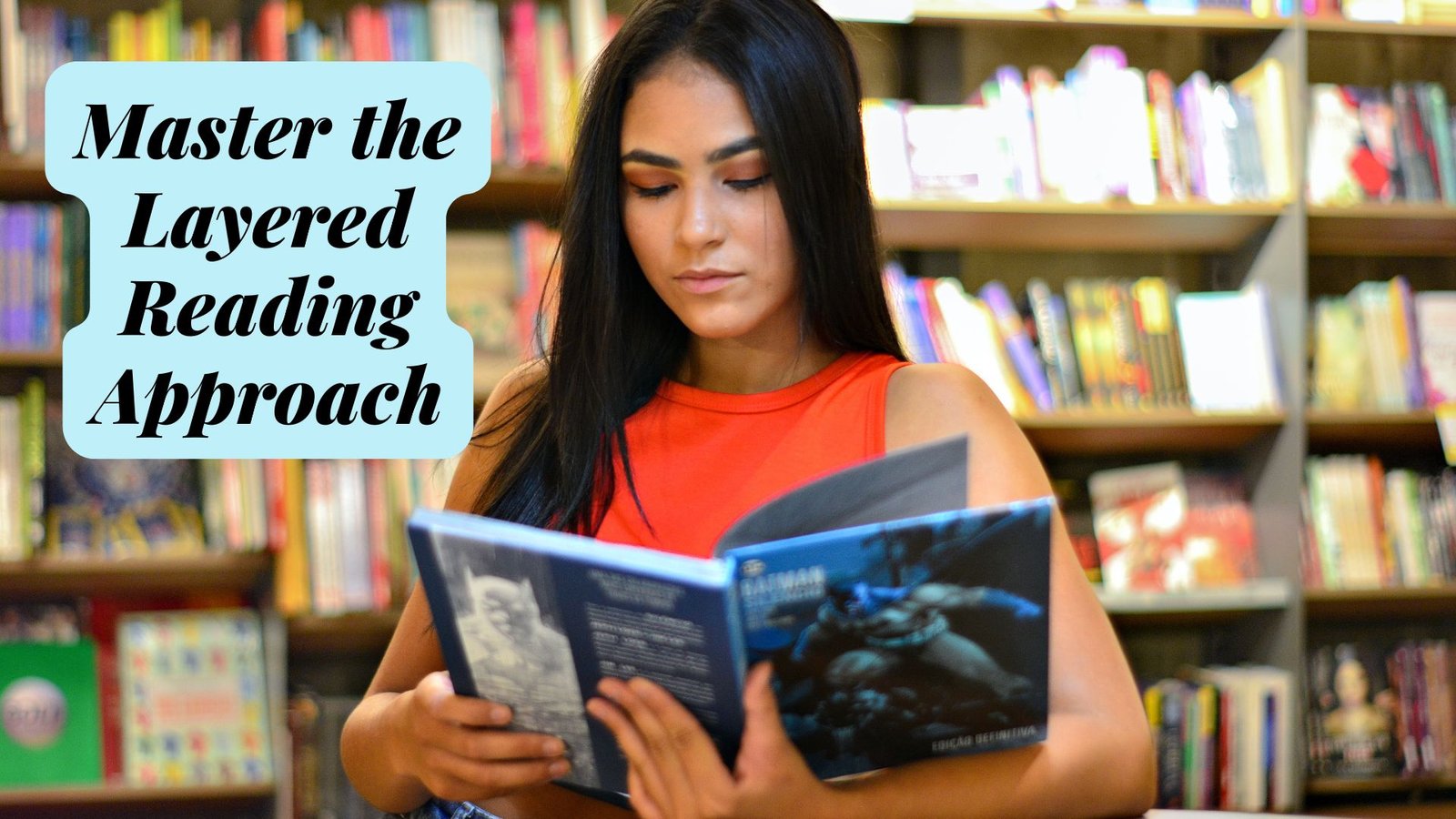Do you ever finish a chapter only to realize you’ve retained almost nothing?
Or struggle to explain a book’s key ideas despite spending hours reading? The problem isn’t your intelligence—it’s your method.
Enter Layered Reading, a research-backed strategy that transforms passive skimming into active comprehension. Used by speed readers, academics, and lifelong learners, this approach helps you:
✅ Cut reading time by 30–50% while improving retention
✅ Decode complex texts (from Faulkner to financial reports) without rereading
✅ Customize your reading based on goals—whether cramming for exams or savoring literature
In this guide, you’ll discover the 5-step layered reading system, how to adapt it to any material, and why it outperforms traditional “cover-to-cover” reading.
Why Traditional Reading Fails (And How Layering Fixes It)
Most people read linearly—start to finish, at one pace. But neuroscience reveals this is the least efficient way to learn:
- Passive reading (straight-through, no engagement) leads to forgetting 80% within 48 hours.
- Layered reading combats this by engaging multiple cognitive processes: previewing, chunking, and spaced repetition.
Think of it like peeling an onion:
- First glance (skin): Get the big picture.
- Deeper cuts (layers): Unpack core ideas.
- Core (essence): Master and apply key insights.
The 5-Step Layered Reading Method
1. Overview: Map the Territory (2–5 mins)
- Skim headings, subheadings, bold text, and summaries.
- Ask: What’s the main argument? How is this structured?
- Goal: Identify 10–20% of key concepts (like scanning a movie trailer).
Pro Tip: For books, read the table of contents first and note intriguing chapters.
2. Preview: Mine for Gold (5–10 mins)
- Read introductions/conclusions, topic sentences, and graphics.
- Highlight recurring terms or questions (e.g., “Why does Steinbeck call the sun an ‘antagonist’?”).
- Goal: Understand 40% of core ideas—enough to predict the author’s flow.
3. Read: Deep Dive with a Purpose
Now read selectively:
- For textbooks: Use SQ3R (Survey, Question, Read, Recite, Review).
- For literature: Try “leap-frog reading”—track recurring motifs (e.g., trace all “sun” references in Grapes of Wrath).
- Goal: Grasp 80% of content by focusing on signal phrases (“most importantly,” “in contrast”).
4. Postview: Connect the Dots (3–5 mins)
- Summarize each section in 10 words or fewer.
- Annotate gaps (e.g., “Don’t get how rivulet marks relate to drought”).
- Goal: Solidify mental models before forgetting kicks in.
5. Review: Lock It In (Spaced Repetition)
- Revisit notes after 24 hours, then weekly.
- Teach someone the core ideas (Feynman Technique).
- Goal: Move knowledge to long-term memory.
Tailoring Layers to Your Needs
| Scenario | Adaptation |
|---|---|
| Exam cramming | Focus on Preview + Read; use Cornell notes for Review. |
| Pleasure reading | Layer 1–3 only; savor prose in “contiguous reads” (uninterrupted flow). |
| Research papers | Leap-frog read methods/results; annotate margins with critiques. |
Why This Beats Cover-to-Cover Reading
- Saves time: Skip filler; 50% of nonfiction books are fluff.
- Boosts critical thinking: Questions > passive absorption.
- Reduces overwhelm: Tackle dense texts piecewise (e.g., legal docs).
Try It Today: The 15-Minute Layered Challenge
- Pick an article or book chapter.
- Spend:
- 2 mins Overviewing
- 5 mins Previewing
- 5 mins Reading key sections
- 3 mins Postviewing
- Note how much more you recall vs. linear reading.
Example: A student using layers cut Macbeth study time by half while scoring higher.
Key Pitfalls to Avoid
❌ Highlighting too much: Be selective—only 1–2 key lines/page.
❌ Skipping Review: Without reinforcement, layers 1–4 fade fast.
❌ Using for all texts: Poetry/jokes need linear reading; save layers for complex material.
Final Thought: Reading Is a Skill—Hack It
As author David Kadavy says: “Follow curiosity, not arbitrary page order” 1. Layers turn reading from a chore into a targeted treasure hunt.
💬 Now I’d love to hear: What’s the first book/article you’ll layer-read? Share below!
More Read:How Active Reading Can Help Increase Your Comprehension
Sources & Further Learning
- Lifehacker: Layered Reading for Book Backlogs
- Teach Like a Champion: Layered Reading in Classrooms
- Open University: Active Reading Techniques
- Princeton: SQ3R & Annotation
- McGraw Center: Cornell Notes
- Academic Reading: Layered Steps
Loved this? Share with a friend who “reads but doesn’t remember”!

